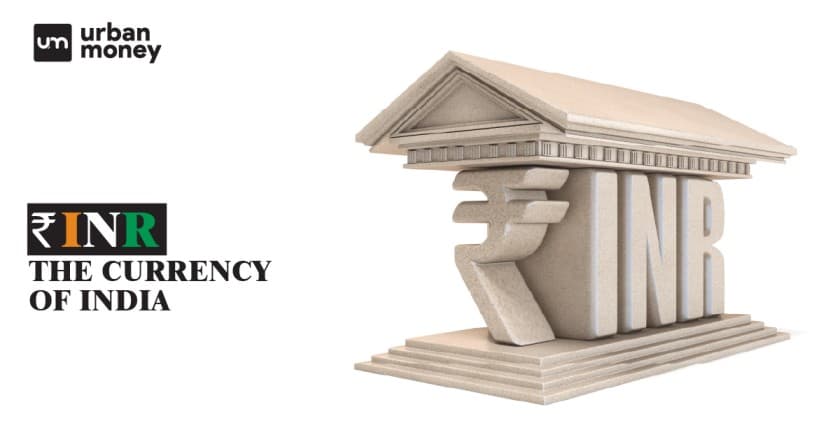INR Full Form

The RBI manages currency in India and carries out its duties under the Reserve Bank of India Act of 1934. INR is now referred to as ₹ rather than Rs since 2010. D. Udaya Kumar designed the symbol. The one rupee coin is the lowest denomination used in the country. However, this denomination was stopped in 2019.
- Personalized solutions
- Expert guidance
- Application assistance
- Credit score discussion
- Interest rate comparison
Table of Content


Last Updated: 20 December 2025
What is the full form of INR?
The full form of INR is Indian Rupee and is the official currency of The Republic of India. The Reserve Bank of India (RBI) monitors and regulates the currency. In 1957, the Rupee was split into 100 paise. Now, 1 INR means 100 Paise.
What is INR?
The Indian Rupee, abbreviated as INR, is the country’s official currency. The rupee is divided into 100 paise, but as of 2019, 1 rupee coins are the most common. The Reserve Bank of India regulates currency issuance under the Reserve Bank of India Act of 1934.
In 2010, the new rupee symbol ‘₹’ was formally adopted. According to its designer, it was made by fusing the Latin capital letter “R” without the vertical bar with the Devanagari consonant ‘र’ (ra). According to others, the parallel lines at the top (with the white space between them) refer to the Indian flag[10] and also show an equality sign, symbolising the country’s intention to lessen economic imbalance. The first batch of coins with the redesigned rupee sign went into circulation on July 8, 2011. In the past, India represented many rupees and a single rupee, respectively, using the letters “Rs” and “Re.”
History of INR
Silver coins are referred to as Rupiya in the book Arthashastra, which was penned by Chanakya, the first Maurya emperor (c. 340–290 BCE) and his prime minister. Gold coins, copper coins, and lead coins are also referenced. The word “form” or “shape” is Rapa.
Large quantities of silver coins made by the Gupta Empire are influenced by those made by Chandragupta II’s earlier Western Satraps. The silver Rpaka coins weighed around 20 Ratti each.
According to Da Tang Xi Yu Ji, there was no stable monetary system during the interim periods. Sultan Sher Shah Suri, who ruled from 1540 to 1545, produced a silver currency known as the rupiya that weighed 178 grains. Babur’s reign saw a roughly 50:2 exchange of brass for silver. The silver currency was still circulated in British India during the Maratha and Mughal eras. [31] The General Bank of Bengal and Bihar (1773-1775, founded by Warren Hastings), the Bank of Hindustan (1770-1832), and the Bengal Bank are three of the institutions that first printed paper rupees (1784–91).
Denominations in INR
The RBI issues rupee coins in several metals; the image of King Ashoka appears on most of these coins. Except for the one rupee note, the picture of Mahatma Gandhi is located on the opposite end of banknotes issued by the RBI. A depiction of a rupee coin appears on the one rupee note.
Coins (Metal Denominations)
India issues coins in the following denominations: 50 paise, 1 rupee, 2 rupees, 5 rupees, and 10 rupees. Paises are one-hundredth of a rupee. Small coins are those valued at 50 paise or less, whereas rupee coins are those worth one or more.
Notes (Currency Papers)
Paper money or banknotes are produced in 5, 10, 20, 50, 100, 500, and 2,000 rupees denominations. While denominations are printed in Hindi and English on the front of paper rupees, they are printed in 15 other languages on the back.
The designs of the banknotes are constantly revised, and there are noticeable differences between the old Mahatma Gandhi Series banknotes and the current ones with the same name. The notes cover a range of topics related to India’s extensive history.
Features of INR Currency
The features of INR, or the Indian currency, are given below:
Security
The security thread is located to the left of the Mahatma’s image. A plain, unreadable, fully embedded security thread exists. However, beginning in October 2000, the Rs. 2000 notes have included a viewable, windowed security thread with the letters “Bharat” (in Hindi), “2000,” and “RBI” alternately visible on the obverse. The security thread is present on every currency note. The security thread on the Rs. 2000, Rs. 500, and Rs. 100 notes appear as a single continuous line when held up to the light.
Watermark
The Mahatma Gandhi watermark, which has a light and shadow appearance and many directional lines in the watermark window, is present on the banknotes from the Mahatma Gandhi Series.
Micro-Lettering
This element can be seen between the vertical band and the image of Mahatma Gandhi. The word “RBI” is printed on the Rs. 5 and Rs. 10 notes. The denominational value of the notes is also printed in micro letters on notes that are Rs. 20 and higher. With a magnifying glass, this characteristic can be seen clearly.
Latent Image
The latent image of the appropriate denominational amount in number is located in a vertical strip to the right of Mahatma Gandhi’s portrait on the obverse side of the Rs. 2000, Rs. 500, Rs. 100, Rs. 50, and Rs. 20 notes. The latent image can be seen only when the note is held horizontally at eye level.
Identification Mark
A special intaglio function has been included on all notes to aid the visually challenged. It is located to the left of the watermark window. This function comes in various shapes for different values, such as a Vertical Rectangle for Rs. 20, a Square for Rs. 50, a Triangle for Rs. 100, and a Circle for Rs. 500.
Intaglio Printing
For the benefit of blind persons, this feature has been incorporated into banknotes. The guarantee and promise clause, the Reserve Bank seal, the Ashoka Pillar Emblem on the left, the Mahatma Gandhi image, and the signature of the RBI Governor are all printed in intaglio. This printing style is found on Indian currency notes with 20, 50, 100, 500, and 2000 rupees denominations.
Key Points About The INR
The key points about the Indian Rupee are given below:
- Pakistan initially utilised Indian money after gaining Independence. For use only in Pakistan, they just imprinted the Indian currency with the words “Government of Pakistan.” Pakistan began issuing its currency in 1948.
- Incorporated in 2006, the Security Printing and Minting Corporation of India Limited (SPMCIL) is a government-owned business. It is in charge of printing the currency of India, as well as postal stamps and other significant official papers. SPMCIL also makes coins. Four presses, four mints, and one paper mill are present.
- According to the Coinage Act of 2011, the RBI is authorised to mint coins with a maximum denomination of $1000.
- Up to 10,000 in notes may be issued by the RBI.
- The currency notes are printed in a total of 17 different languages. The centre of the notes boldly displays both English and Hindi. The back of the notes has translations in fifteen different languages, including Gujarati, Assamese, Kannada, Kashmiri, Malayalam, Marathi, Oriya, Punjabi, Nepali, Sanskrit, Bengali, Tamil, Telugu, Konkani, and Urdu in, addition to Hindi and English.
- The currency notes are also printed by Bharatiya Reserve Bank Note Mudran Private Limited (BRBNMPL), a division of the RBI. It has two presses, one each at Salboni and Mysore.
INR : Frequently Asked Questions (FAQs)
What is INR Bank language?
The full form of INR is Indian Rupee. It is the official currency of India and is controlled by the Reserve Bank of India (RBI).
Who decides the figure be printed on the Indian currency notes?
The Government of India consults the Reserve Bank of India when deciding the figure to be printed on the Indian currency notes.
How many Issue offices are there in India?
The Central bank of India, RBI is the regulatory body of Indian currency, that is, INR. This issue office has 31 branches all over the country, with its central office in Mumbai.
